Excuse me for cross-posting on Software Engineering, didn't know that it was frowned upon.
The answer I was got there was exactly what I was looking for, for those curious: https://softwareengineering.stackexchange.com/a/347143/269571
Original question
I'm reading the book "Agile Software Development, Principles, Patterns, and Practices" by Robert C. Martin.
When he talks about the Dependency Inversion Principle he gives the following example of a DIP violation:
This seems very clear to me, as the higher-level object Button is depending on a lower-level object Lamp.
The solution he comes with is:
He creates an interface so that way Button is no longer depending on the object Lamp.
The theory seems really clear to me, however I can't wrap my head around using the principle in real-life projects.
Who is going to determine what classes (that implement
SwitchableDevice) need to be called?Who tells
Buttonwhat devices he need to turn on/off?How do you tell an object that uses something abstract which concrete things it needs to use? (Please correct me if this question is completely wrong)
If anything is unclear about my question, please let me know, I'll be glad to clarify things for you.

